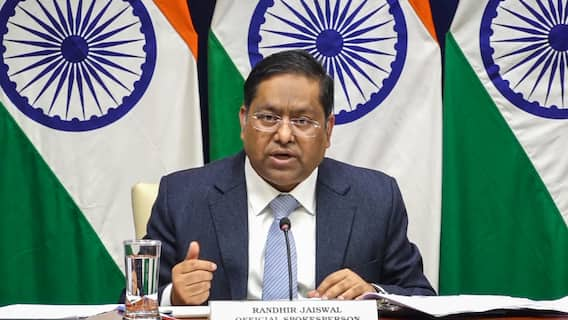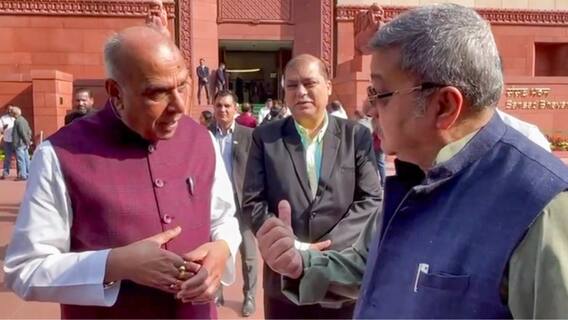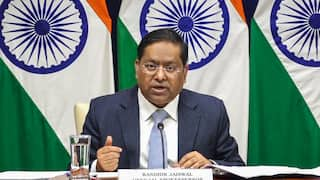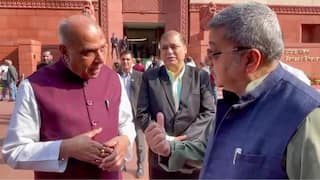Neighbourhood Watch: Why US-Pakistan F-16 Deal Has India Concerned
In the past, US-Pak defence ties created trust deficit in India-US relations. When Trump admn stopped all defence aid and cooperation programmes with Pakistan in 2018, India had welcomed the move

The resumption of US-Pakistan defence cooperation, in the form of the refurbishment programme of F-16 fleet of the Pakistani Air Force after a gap of four years, reminds India of the US policy of running with the hare and hunting with the hounds — when the US administration used to advance the same argument that the supply of defence hardware to Pakistan will not alter the balance of power in South Asia, and that F-16 fighter planes are meant for fight against terrorism, and also that the fighters cannot be used against India.
It would be naïve on part of anyone to believe that the F-16s are meant to tackle terrorists. It is like using a gun to kill a fly. Nobody in India believed then, nor anybody is believing now. In the past, the US-Pak defence ties have created a trust deficit in India-US relations. It took a long time for the US administration to understand and act on India’s concerns. It was only in 2018 that the Donald Trump administration stopped all defence aid and cooperation programmes with Pakistan. India had welcomed the move and the Trump administration acknowledged that Pakistan was cheating them.
However, with the US returning to its old Pakistan policy, the Indian establishment is upset with the revived American policy of supplying defence systems to both India and Pakistan to sustain its arms industry. The explanation given by US officials to defend its decision to clear the US $450 million deal to upgrade and modernise the F-16 fighter aircraft it had supplied to Pakistan in the early nineties has not impressed the Indian foreign office in South Block. The sudden change in the US policy towards Pakistan, without taking India into confidence, has infuriated Raisina Hills.
Is America Rewarding Pakistan?
At a time when India and the US have their hands tied in various groupings of nations, virtually managed by the mandarins of Foggy Bottom in Washington — QUAD, IPEF , I2U2 etc — and are having extensive army-to-army, air force-to-air force and navy-to-navy interactions between top officials, with the undeclared intent to take on China in the rough waters of South China Sea, the US policy decision of re-energising Pakistan Air Force by upgrading its F-16 fleet of four squadrons, have potentials to create fissures in the US-led groupings, which include India, and ultimately weaken those groupings of likeminded Indo-Pacific powers.
India’s concern over the F-16 deal was specifically voiced by Defence Minister Rajnath Singh over a telephone call last Wednesday to US Secretary of Defence Lloyd Austin. Singh expressed India’s resentment and asked Austin to avoid approving the proposed sale by adhering to its policy over the last few years to not militarily help Pakistan.
According to a senior official, Pakistan acquired F-16s over three decades ago to deploy on Indian borders, which was evident during the 2019 Balakot surgical air strike by the IAF when Pakistan retaliated with F-16 fighters, one of which was reportedly shot down by India.
Though the Indian foreign office didn’t publicly react to the clearance given by the US administration to the midlife F-16 upgrade, Indian diplomats are reported to have raised this issue during the official-level four-nation QUAD meeting held in New Delhi in the second week of September. They frankly told the visiting senior US officials that India has serious reservations with the US go-ahead to the proposal to sell hardware and software equipment, systems and technology to revitalise the F-16 fleet of Pakistan Air Force.
In strategic circles, the buzz is that the US has rewarded Pakistan for critical help in eliminating Al Qaeda leader Ayman al Zawahiri, then hiding in Kabul near the US embassy compound. The US is also reported to be impressed with Pakistani army chief General Qamar Jawed Bajwa’s move to extend direct military support to Ukraine against the Russian invaders by supplying ammunition to Ukrainian forces. Also, the US wants to keep open its line of communication with the Pakistani generals who are running the country behind the curtains. There are also reports that the US will withdraw its backing to the Financial Action Task Force or FATF’s action to keep Pakistan under its grey list over terror funding.
A Message To India?
Strategic observers also say that the US decision to resume defence cooperation with Pakistan is a message to India, since the US administration is not happy with India’s refusal to join the US and Europe in directly condemning Russian leader Vladimir Putin for the Ukraine invasion. The US is also reported to be trying to convey a message to India for defying its diktat of cancelling the acquisition of S-400 anti-missile defence systems from Russia. The resumption of US-Pak military relations is a cause of concern in the Indian strategic circles. Knowledgeable sources in Raisina Hills say the US seems to be back once again on the same old path of appeasing Pakistan. Observers say that after departure from Afghanistan, the US needs Pakistan, which is considered a critical node in its Central Asia and Middle East strategy.
It is very strange that after winning Indian trust by supplying defence systems and platforms worth over $21 billion to armed forces during the last one and a half decades and drawing India in its strategic fold, the US is trying to counter Indian defence capabilities by upgrading Pakistan’s F-16 fleet with latest avionics and electronics to be fitted in the planes’ cockpits, which will drastically increase their lethality. This will allow the Pakistan air force to carry more advanced missiles and sensors that will enhance its deterrence capabilities against Indian Rafales and Sukhoi-30 fighters.
The US would be supplying the F-16 upgrade package worth US$ 450 million under its Foreign Military Sales (FMS) programme with the money arranged under the US military aid programme. The deal offers the same price package as to the US Air Force. Interestingly, a debt-ridden Pakistan, suffering from a massive payments crisis and further exacerbated by devastating floods, has preferred to spend such a huge sum on a military modernisation programme.
The author is a strategic affairs analyst.
[Disclaimer: The opinions, beliefs, and views expressed by the various authors and forum participants on this website are personal.]
Trending News
Top Headlines








































